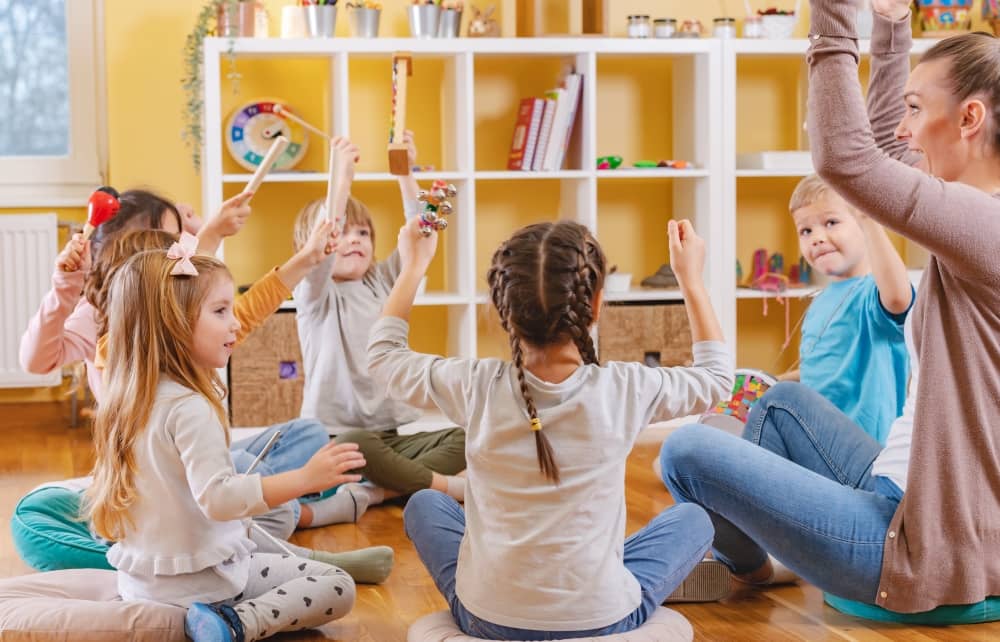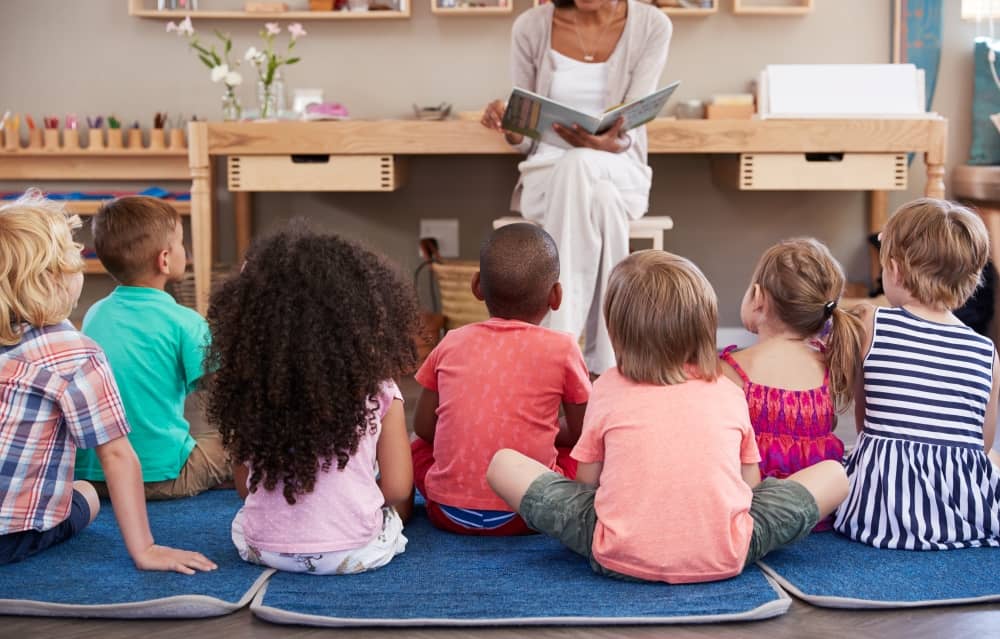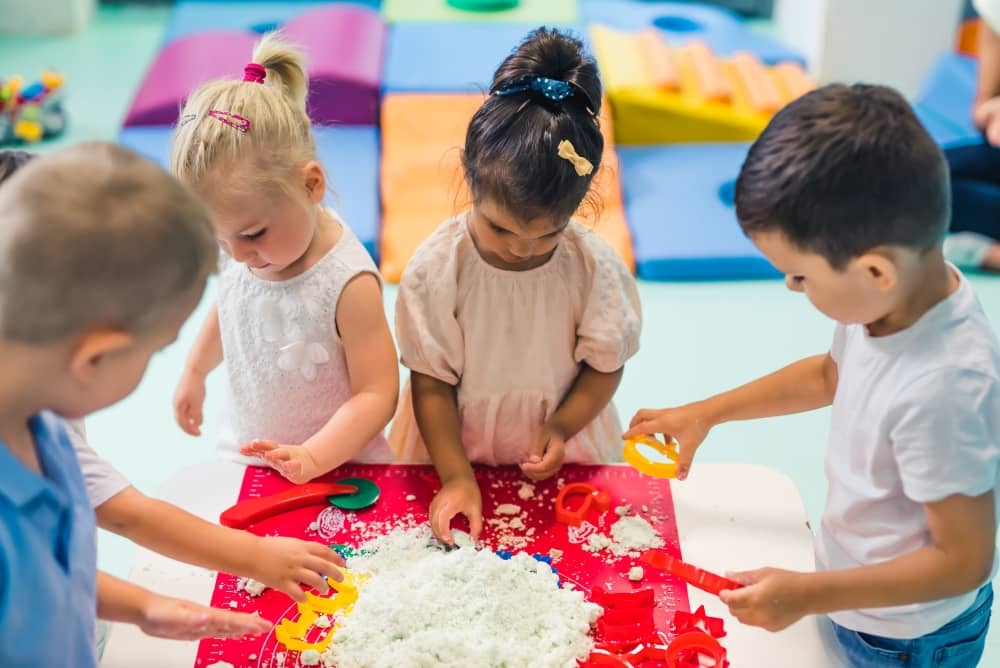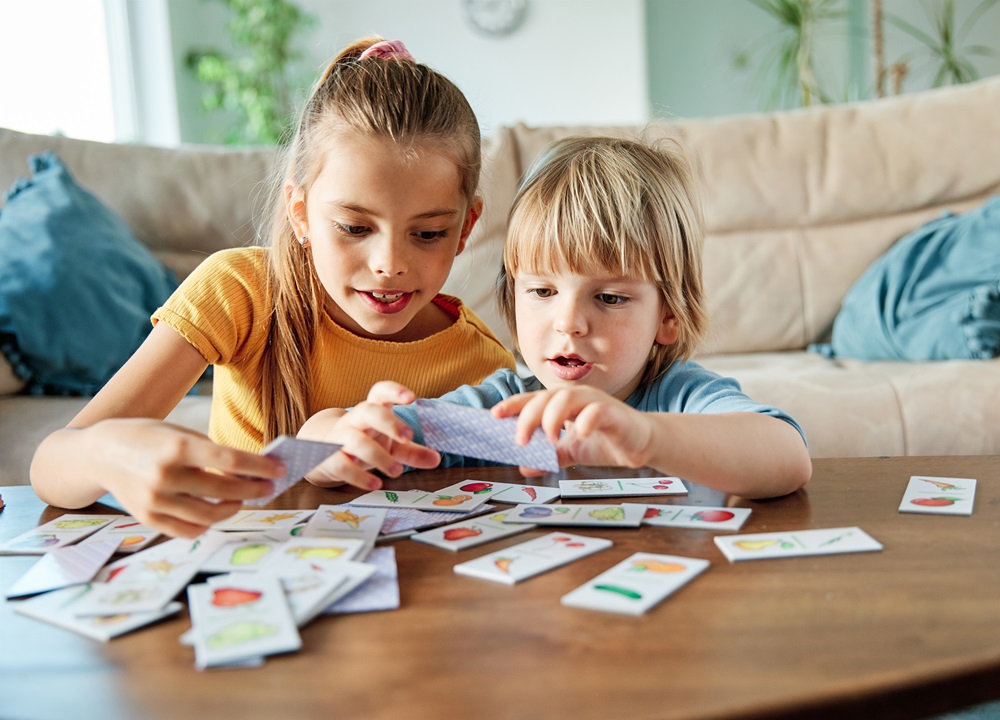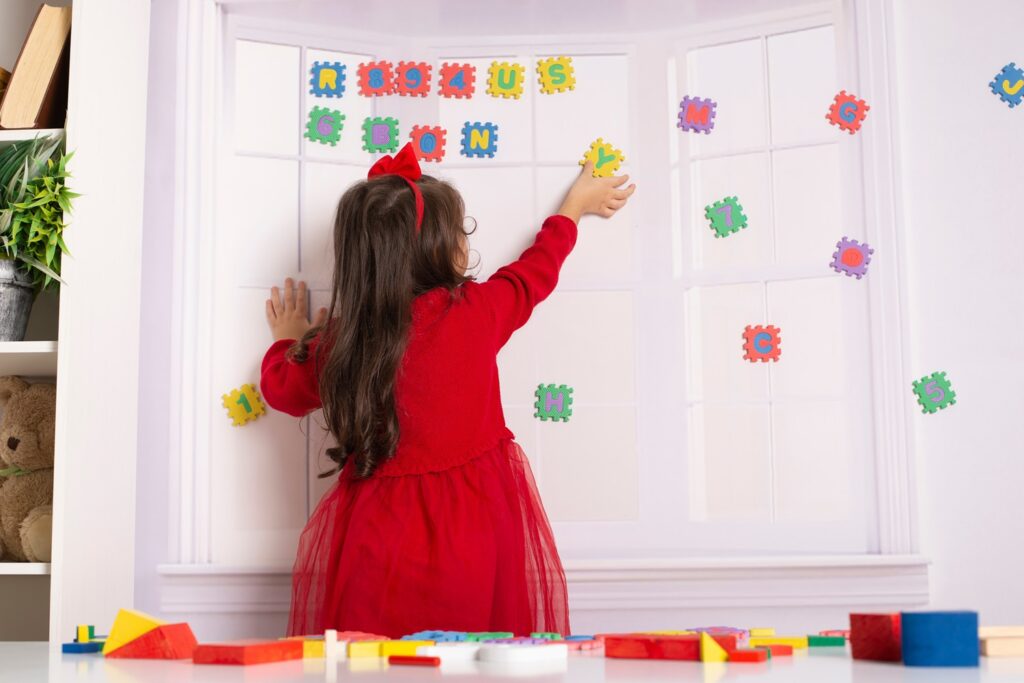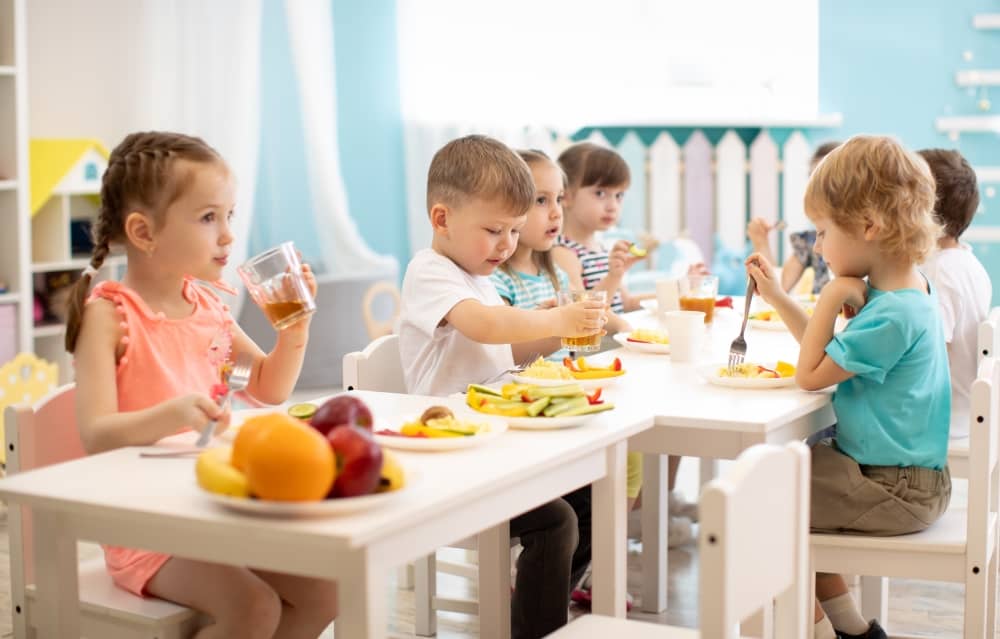Did you know everyone learns differently, including children? There are four main types of children’s learning styles: visual learning styles, auditory learning styles, tactile learning styles, and kinaesthetic learning styles.
Some children have one distinct learning style, while other kids may have a combination of learning styles. By recognising and understanding your child’s learning style, you can support your child as they develop and grow and help them cultivate a love of learning.
Here, we’ll cover the different children’s learning styles, how to recognise your child’s learning style, and how we structure our daily activities at Tribe Early Learning to cater to each learning style.
The Four Different Learning Styles
Visual Learning Styles
Visual learning styles at a glance: Learn by seeing and observing
Of all the children’s learning styles, visual learning styles are the most common. Around 65% of people have visual learning styles.
Visual learners enjoy notes, pictures, written information, diagrams, maps, graphs, and other demonstrations they can see and observe. Kids who are visual learners need to see the info they are learning to comprehend it and retain it.
If you notice your child enjoys doodling and scribbling and loves pictures, they could be a visual learner.
Here are some ways we help stimulate and engage visual learners:
- Use fun demonstrations, pictures, and flashcards when offering information
- Use expressive facial movements when presenting information
- Encourage picture drawing and doodling
- In addition to speaking information, we write information or draw pictures on a whiteboard for children to see
You May Also Like: The Benefits of Daycare
Auditory Learning Styles
Auditory learning styles at a glance: Learning and understanding through listening and hearing
Children who learn through listening are auditory learners. They absorb information best when they hear it. This can occur through listening to a teacher or hearing a story read out loud by someone else or themselves.
Here at Tribe, we’ve found that children with auditory learning styles benefit most from spoken information as opposed to something that is written down. That’s why we actively use a variety of auditory learning methods as part of our daily play.
To support auditory learners, our childcare specialists make a point to:
- Read stories out loud
- Expose children to rhythm and repetition by singing jingles or repeating fun rhymes
- Listen to children read out loud
- Encourage auditory learners to take part in discussions and ask questions
- Support children as they explore new ideas by asking them questions about what they are doing
- Repeat tasks or info to them, or ask them to repeat it
- Use clear and expressive language
Tactile Learning Styles
Tactile learning styles at a glance: Learning through touch
Is your child always picking things up and looking them over, wanting to hold and feel objects in their hands, asking to use clay, markers, or stickers, and exploring the different textures of materials? They could be a tactile learner.
Tactile learners thrive when they can participate in learning activities that involve materials, objects, and physical projects that involve touch and a hands-on approach.
When presented with visual or audio material, tactile learners may struggle to engage with the information or retain what they learned.
We’ve found at Tribe Early Learning that tactile learners thrive when:
- They get hands-on instruction
- They participate in role-playing or physical activities
- They get to play with playdough, clay, slime, chalk, crayons, art materials, etc. (according to when it is age-appropriate)
- They get to take part in engaging learning games
- They get to take part in learning activities that involve using their hands and tools (such as scissors, tape, rulers, etc. when it is age-appropriate)
We support tactile learning styles by offering an assortment of safe yet intriguing toys, such as puzzles, that children can touch, hold, squeeze, and poke as they explore their environment.
We also include hands-on activities, such as finger painting, throughout our days to engage tactile learners and support their preferred learning style.
Kinaesthetic Learning Styles
Kinaesthetic learning styles at a glance: Learning through doing and movement
Kinaesthetic learning styles are similar to tactile learning styles. Both of these learning styles involve a high level of whole-body learning and gross motor skills.
Kinaesthetic learning styles prefer to learn while doing. The more physically connected they are to a learning experience, the more they will understand it.
You can recognise a kinesthetic learner by looking for a child who:
- Uses a high level of motor skills when learning
- Calls on all of their senses when learning
- Struggles to sit still
- Likes to act out events
- Exceeds physical activities, such as acting, dancing, athletics, sports, active games, etc.
To cater to children who prefer kinesthetic learning, our childcare specialists incorporate a variety of strategies, such as:
- Hands-on activities
- Multi-sensory lessons and activities
- Active participation
- Fun, engaging learning games
- Movement-focused games and activities
Nature-based play complements all learning types but can be especially helpful for kinaesthetic learners who enjoy hands-on activities and being physically active.
At Tribe Early Learning, we know there are many benefits of nature-based play and actively incorporate it into our daycare centres.
We Prioritise Every Child at Tribe Early Learning
Every child has unique needs and capabilities, including their preferred learning style. From engaging, multi-sensory activities and games for kinesthetic learners to pictures and visual aids for visual learners, we purposefully incorporate all learning styles here at Tribe Early Learning.
Our goal is to set each child up for success by recognising their preferred learning style, understanding their unique capabilities and personality, and working closely with parents. We provide each child with the resources and support they need to thrive and grow.
We make a point to understand each child’s learning style so we can adjust lessons accordingly, incorporate games or activities that nurture their learning style, and help them build a lifelong love of learning.
At our Tribe Early Learning Centre, we focus on allowing children to learn through a stimulating environment, play-based learning, and confidence-building activities.
We look forward to welcoming you as a part of our ever-growing Tribe and would love to discuss children’s learning styles with you, answer questions about our innovative childcare centres, or book an appointment to meet with you. Contact us today to learn more about our comprehensive approach to childcare.
